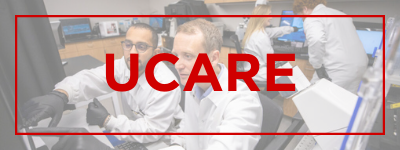UCARE: Undergraduate Creative Activities and Research Experiences

UCARE: Research Products
Date of this Version
4-2016
Document Type
Poster
Citation
White ME, Engel AJ, Bashford GR. Effects of local blood flow on muscle stiffness. UCARE Poster Presentation, April 2016. University of Nebraska-Lincoln 2016.
Abstract
Muscle injuries, in the form of strains or even tears, affect millions of people each year through undue tension on muscles during everyday activities, work tasks, or physical activity including sports or working out. These injuries can take from a few weeks to even months to heal, with patients having to deal with inflammation, swelling, and pain throughout the healing process. Scar tissue also forms when the muscle is injured, which regenerates throughout the healing process, but never fully recovers to its state prior to injury. This scar tissue is thought to make the muscle more prone to subsequent injury, making it important to avoid muscle injuries to begin with so as to not lose overall strength and range of motion. Although there are currently certain activities identified to increase the probability of muscle injury, there is limited evidence as to what physiological components may make an individual more susceptible to injury. Therefore, the purpose of this study is to look at the association between two measures; blood flow velocity through muscle using Doppler ultrasound and the muscle's stiffness, or Young's modulus, using ultrasound elastography. A notable correlation between the two factors could allow clinicians to know if patients have a predisposition to muscle injury due to their rate of blood flow.
Included in
Health Information Technology Commons, Other Medicine and Health Sciences Commons, Rehabilitation and Therapy Commons


Comments
Copyright (c) 2016 Megan E. White, Aaron J. Engel, & Gregory Bashford